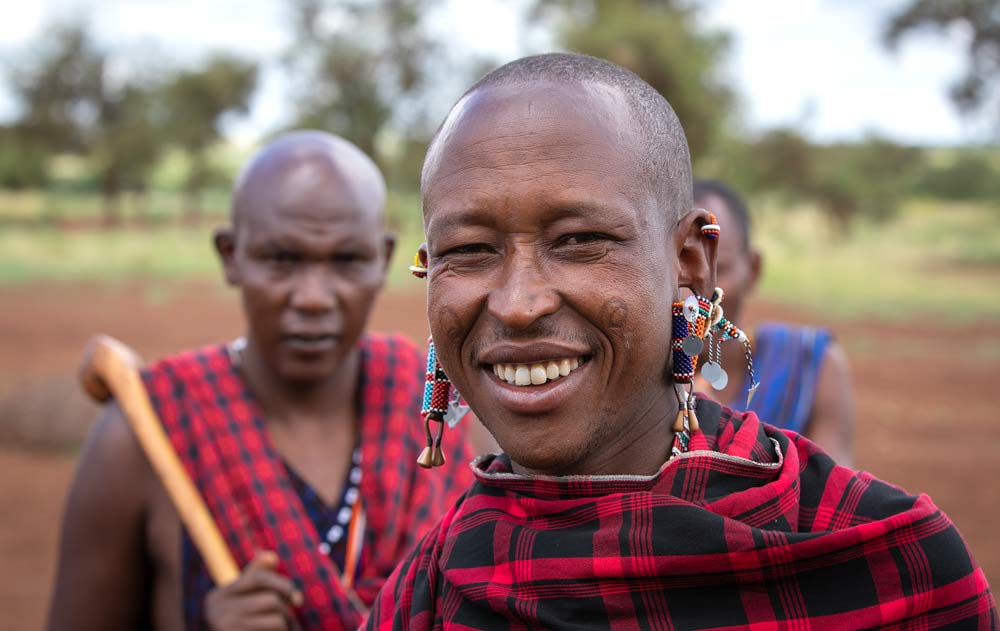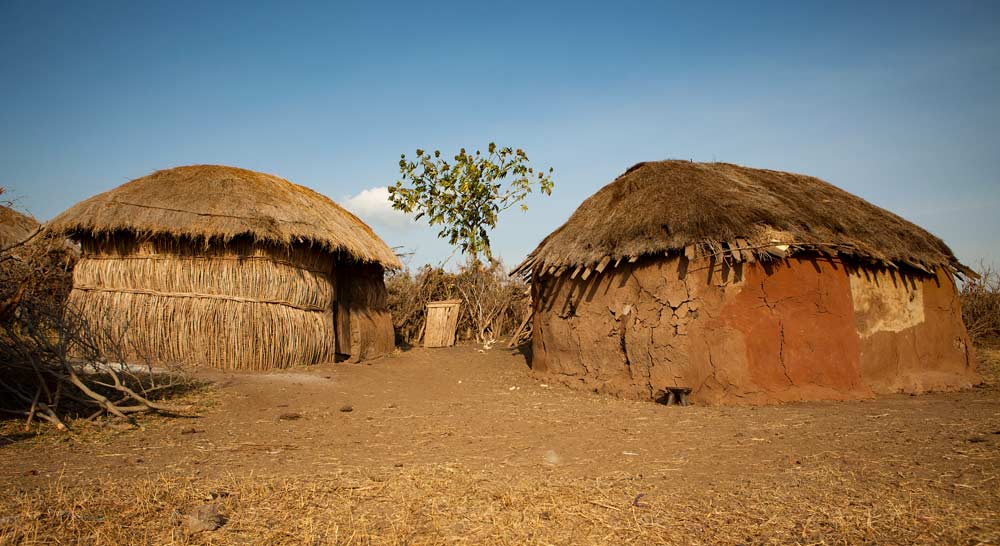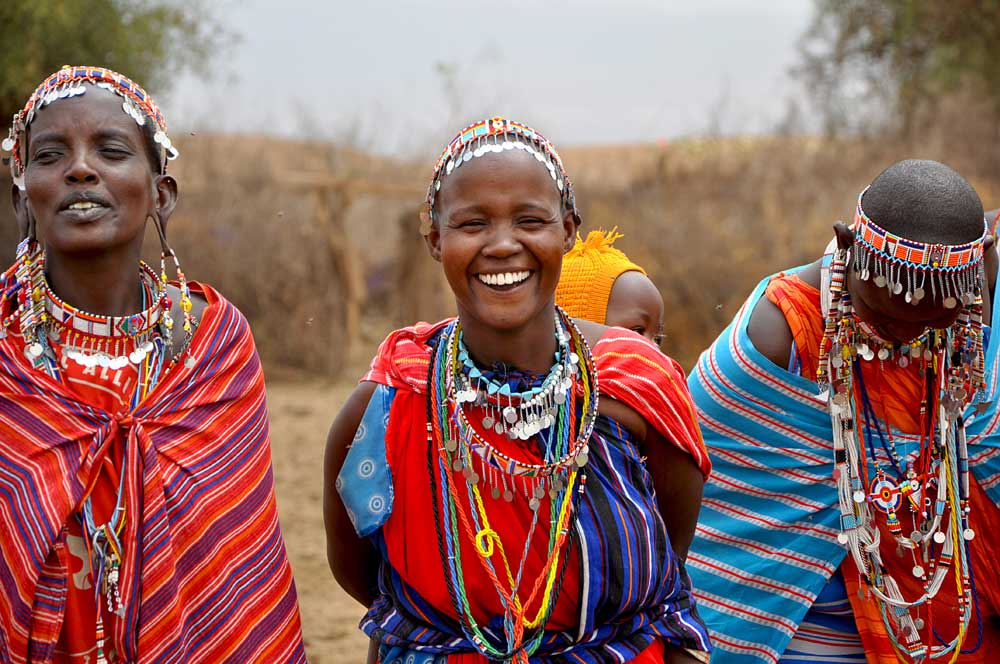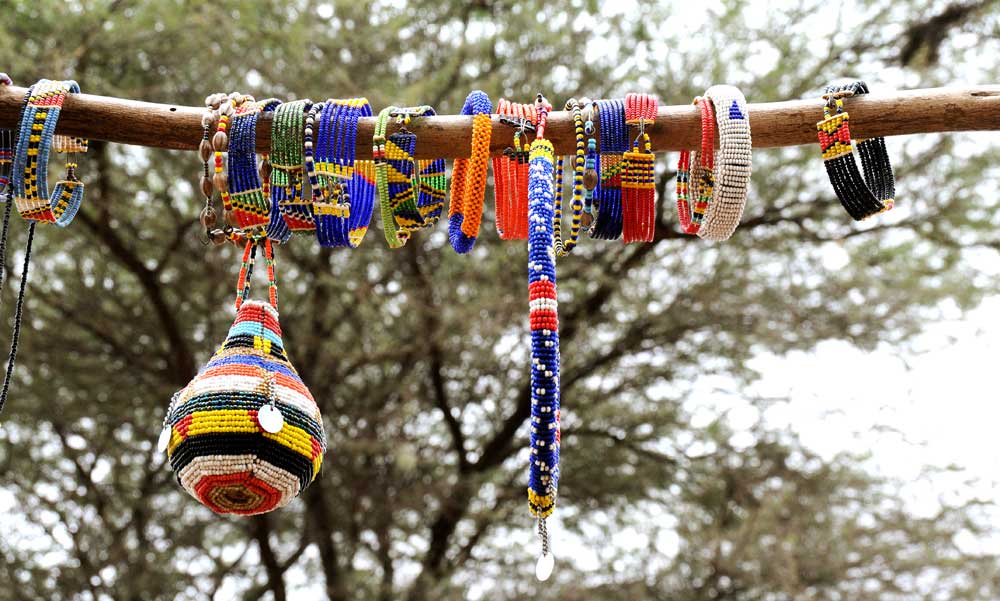One of the highlights of a visit to Kenya is the chance of experiencing an authentic Maasai village visit. Such visits will generally be arranged by your tour guide or lodge and are well worth doing. This feature aims to give you an idea what to expect of your visit.
Once outside the boundaries of the Masai Mara National Reserve, the landscape changes. We drive past small settlements, people walk alongside the road; donkeys graze and little bands of children turn to watch us go by. We turn off the road and bump along a track until we come to a high brushwood fence.
A smiling Maasai welcome

A group of young men wait by a break in the fence. They’re dressed in traditional Maasai costume – red, plaid, shuka cloaks, simple sandals made from old car tyres, known as ‘thousand milers’, strings of beads wound around their chests. Our driver calls out a greeting and the young men approach to welcome us. Their English is perfect; their smiles are wide.

We move on into the village or boma (enclosure). It’s a large circular enclosure containing a central area of bare mud. Around the perimeter are perhaps eight or nine low huts with mud walls and flat brushwood roofs. A few scantily clad children peep around corners – eyes large. A yellow dog with a curled tail sleeps in the sun.
We meet the villagers
We are introduced to the chief of the village and now, as if beckoned by some unseen signal, people emerge. Women cradling babies, old men leaning on long sticks. But there are no warriors and no younger women. The reason soon becomes apparent – they have been getting into their dance costumes.

The warriors approach in a long line, their heads dipping as they pace rhythmically forward raising and lowering their spears as they come.
And then the dance begins. In the centre of the boma, the maidens sing, their voices high-pitched, reed-like and surprisingly loud. They move in a stamping, swaying dance – like so many brilliantly coloured butterflies.
Maasai jumping
The young men take the stage. Their song is deep and reverberating. They form a semicircle and one by one, step forward and jump high into the air. It’s uncanny just how HIGH they can jump. ‘The current Maasai record is eight feet’, says our guide as an aside.
Naturally, we’re encouraged to have a go ourselves.

Bartering for beadwork
Almost as quickly as it began, the dance ends, and the colourful crowd moves off. ‘Now to the market,’ says our guide. Beyond the rough fencing of the boma, a makeshift market has been set up – and here the people from the surrounding bomas have set up their display.

Some ladies sit on the ground, others have simple stalls – and the display of beadwork is stunning. There are necklaces and collars, beaded walking sticks and beaded belts. Every lady strives to thrust her own wares forward. It’s utterly chaotic and superbly colourful. Cameras whirr. The ladies don’t speak English so the chief translates. We’re expected to barter and, though timid at first, we enter into the swing of things. Finally, laden with belts, beads, shields, gourds and fly-whisks we return to our vehicle. But we’re not alone. We’re escorted by the ladies, the dancers, the warriors, the toddling children and the yellow dog.
A Maasai village visit is an experience and a privilege
Reluctantly we depart. We’re silent in the vehicle. Absorbing it all. For perhaps 45 minutes we have been welcomed into another realm – one so entirely unlike our own that we are simultaneously humbled and uplifted. It’s an experience and a privilege. And one certainly not to be missed.
© 2025 Kenya Holidays
